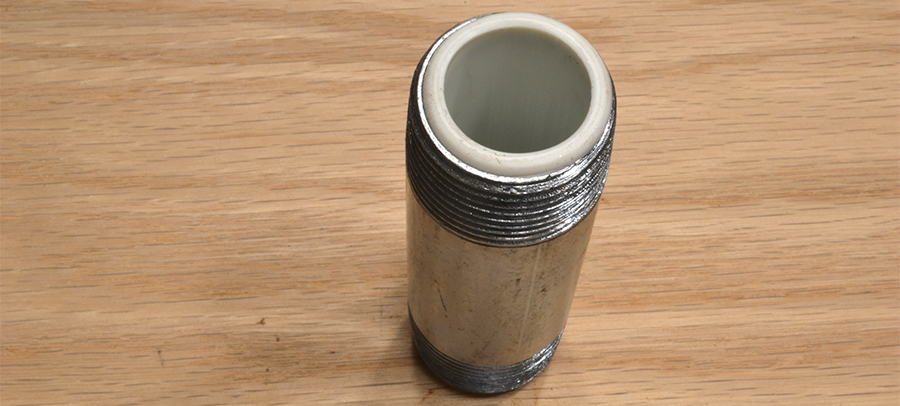It takes only a few minutes but most homeowners don’t know to do it. A brief inspection of your water heater pipes can reveal an obvious trouble-sign and possibly a significant problem. A quick look will show if there is corrosion on the pipes connected to the top of your water heater.
A common situation
Many water heaters develop leaks at the pipe connections on top. Manufacturers usually provide two special steel pipe fittings that are threaded into the top of the steel tank. It’s typical for steel water heater tanks to have the cold water inlet pipe and the hot water outlet pipe connected to these fittings using copper fittings and pipes.

When copper and steel are connected together in the presence of a conductive liquid (the water in the pipe), an electrochemical reaction occurs that causes the steel to corrode at the point of connection. This process is called galvanic corrosion. It’s the same thing that occurs in a simple battery. The degree and speed at which this process happens will vary based on the quality of your water.

The special galvanized steel fittings installed by the manufacturer are called dielectric fittings. They have a plastic tube within the steel pipe that is intended to internally seal on both ends and prevent the steel pipe from contacting the water within the pipe. If the steel is not in contact with water, corrosion can’t occur, even though the copper and steel are directly connected.

For a variety of reasons, these fittings can develop imperfect internal seals at the threaded ends. Once water leaks past the seal and makes contact with the steel and copper connections, corrosion begins. Galvanic corrosion will dissolve the steel pipe threads within the copper fitting connected to it.
Here’s what to check
A simple visual check of the pipes and fitting at the top of your water heater should reveal any signs of corrosion. If you can see corrosion at the connection between the steel and copper fittings, this could be an indication that galvanic corrosion is occurring.

The corrosion process dissolves the steel pipe threads and severely weakens the pipe joint. It’s more serious than a simple pipe thread leak. Excessive water pressure from fast-closing automatic water valves used on washing machines and dishwashers can cause a weakened pipe-joint to burst unexpectedly.

If you find corrosion on copper-to-steel joints, it’s time to call your licensed plumbing contractor for a closer look. Your plumber can verify that the installation meets all of the local code requirements to prevent or reduce galvanic corrosion.
If corrosion has occurred at the pipe joints, new pipes and fittings will be required at the damaged locations. It’s best to catch and correct this early before it advances to a sudden and unexpected pipe burst and severe water damage to your property.
Share what you found during your visual inspection in the comments, or post a picture on or with the hashtag, #PostYourPipes
© 2018 The Hartford Steam Boiler Inspection and Insurance Company. All rights reserved. This article is intended for information purposes only. All recommendations are general guidelines and are not intended to be exhaustive or complete, nor are they designed to replace information or instructions from the manufacturer of your equipment. Contact your equipment service representative or manufacturer with specific questions.

Discussion
There are no comments yet.